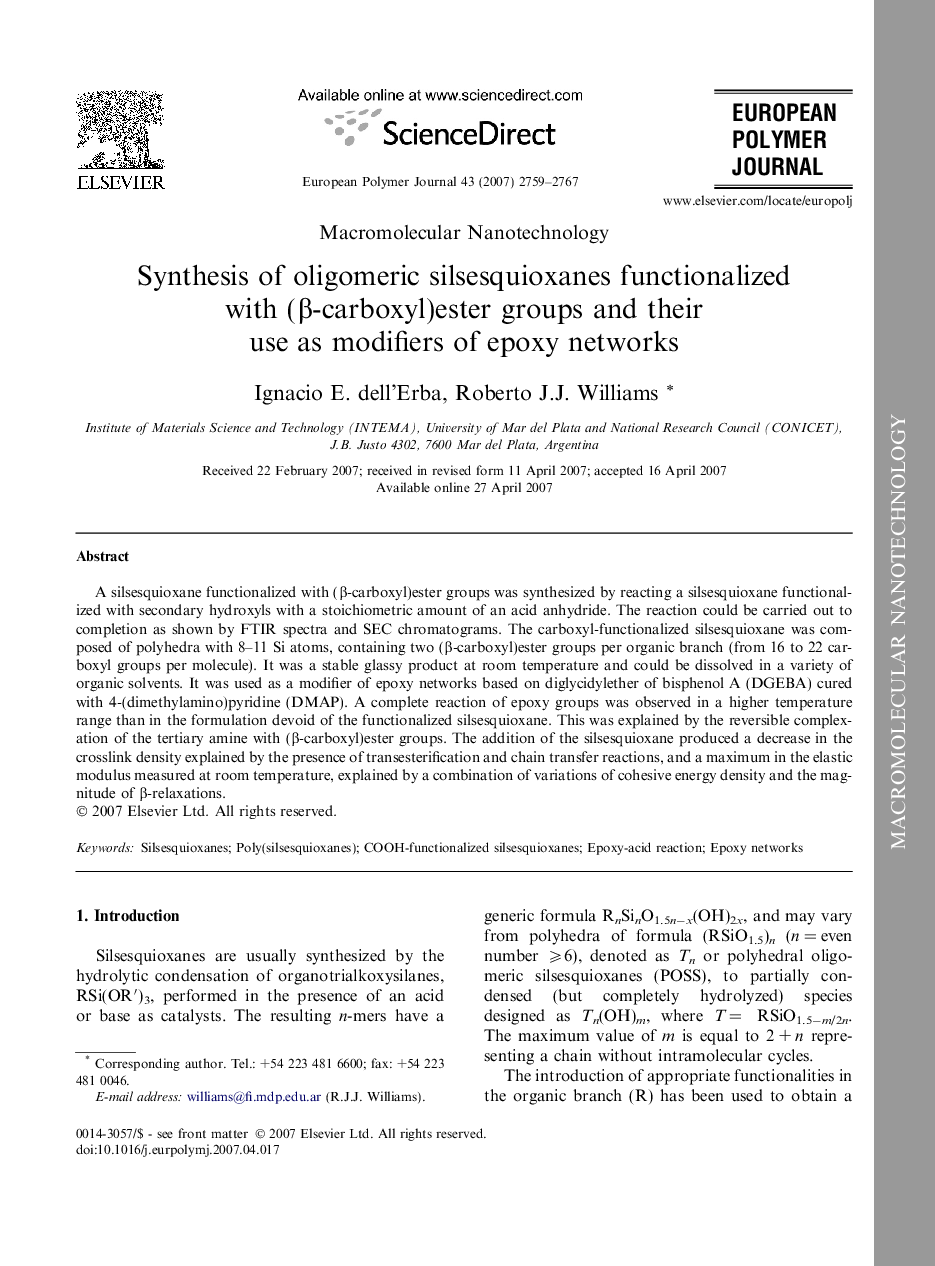| Article ID | Journal | Published Year | Pages | File Type |
|---|---|---|---|---|
| 1396640 | European Polymer Journal | 2007 | 9 Pages |
A silsesquioxane functionalized with (β-carboxyl)ester groups was synthesized by reacting a silsesquioxane functionalized with secondary hydroxyls with a stoichiometric amount of an acid anhydride. The reaction could be carried out to completion as shown by FTIR spectra and SEC chromatograms. The carboxyl-functionalized silsesquioxane was composed of polyhedra with 8–11 Si atoms, containing two (β-carboxyl)ester groups per organic branch (from 16 to 22 carboxyl groups per molecule). It was a stable glassy product at room temperature and could be dissolved in a variety of organic solvents. It was used as a modifier of epoxy networks based on diglycidylether of bisphenol A (DGEBA) cured with 4-(dimethylamino)pyridine (DMAP). A complete reaction of epoxy groups was observed in a higher temperature range than in the formulation devoid of the functionalized silsesquioxane. This was explained by the reversible complexation of the tertiary amine with (β-carboxyl)ester groups. The addition of the silsesquioxane produced a decrease in the crosslink density explained by the presence of transesterification and chain transfer reactions, and a maximum in the elastic modulus measured at room temperature, explained by a combination of variations of cohesive energy density and the magnitude of β-relaxations.
